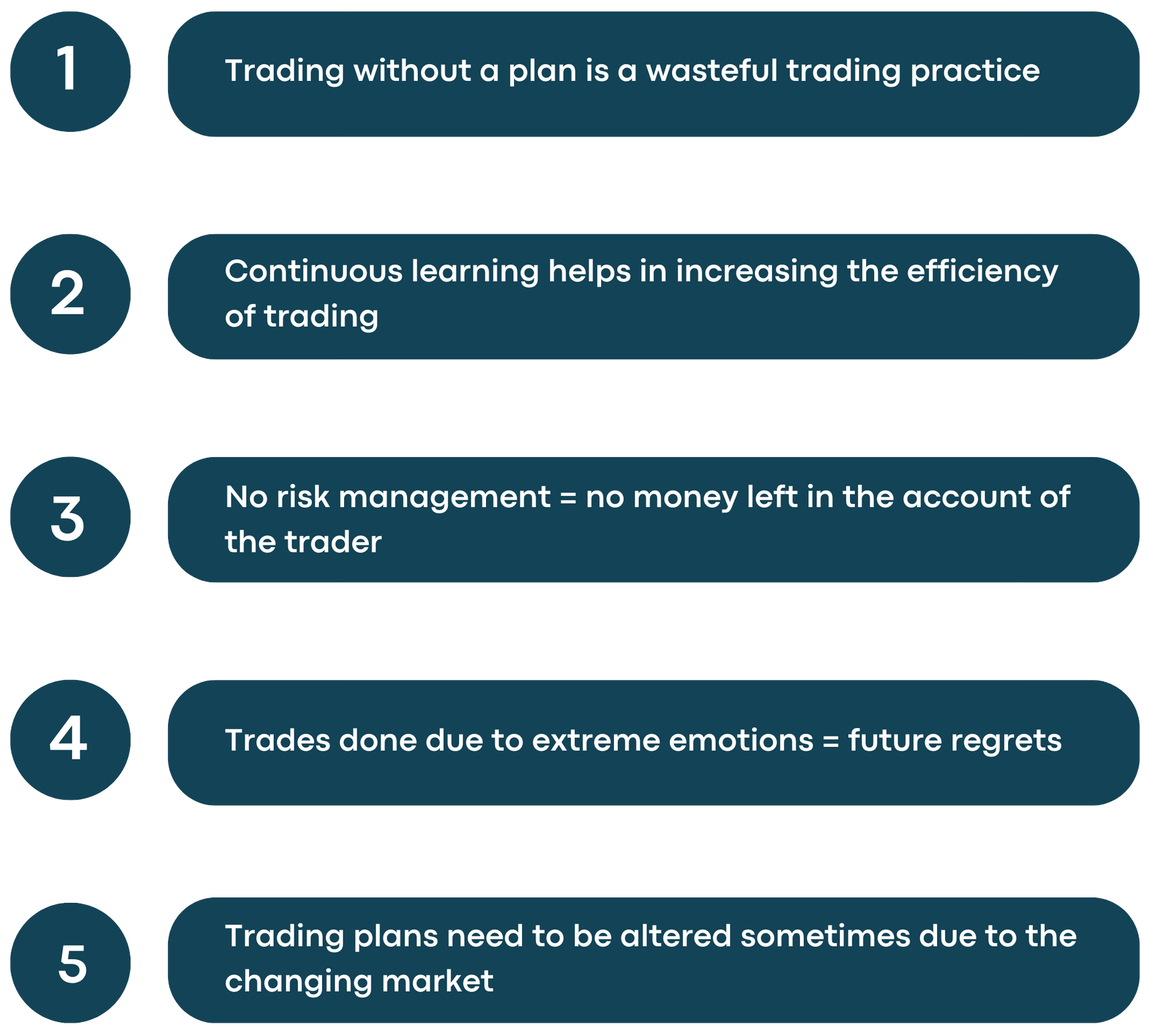Steps to Create a Forex Trading Plan
To succeed in trading, it is important to have a well-thought-out trading plan. A well-formed trading plan would be helpful in determining trading objectives, risk mitigation techniques, and performance evaluation. Forming a trading plan includes various elements. Ready to know about them?
STEP 1: DETERMINE YOUR TRADING OBJECTIVES
Every action of a human being is governed by their goals. These goals or objectives can be both short-term and long-term. Short-term goals are supposed to be achieved in a few weeks or months. Long-term goals are supposed to be achieved in a few months or years. Setting these trading objectives would help traders, i.e., you, be motivated. Set realistic and attainable objectives based on your expertise and available capital.
STEP 2: FORM A TRADING STRATEGY
While forming a trading strategy, it is important to decide a trading style that suits you the best. It can be short-term trading styles, such as scaling or day trading, or long-term ones, such as position trading. Doing proper analysis is the key to success. Hence, traders should choose or integrate multiple analysis techniques, such as fundamental, technical, or sentimental, into their trading approach. They should know when they would want to enter or exit a trade as per their trading goals.
Also Read: Cracking the Code: Technical Analysis vs Fundamental Analysis
STEP 3: IMPLEMENT PROPER RISK MANAGEMENT
Risk management is important if you don’t want to end up losing all your money. Traders should apply risk management tools while trading, such as stop-loss and take-profit orders. Stop-loss orders will help them exit a trade if they’re facing massive losses, and take-profit orders will help them exit a trade if they have earned a good amount of profit. This will help the trader have good control over their capital.
STEP 4: NOTE & MONITOR YOUR TRADES
While trading, it is effective to note down trades. This helps the trader reflect on their trading performance. They can understand which trades worked in their favor and the mistakes that they have made while trading. It helps with self-reflection and provides a lot of insights. Traders should not feel sorry about their mistakes; instead, they should learn from them and trade stronger and better.
STEP 5: KEEP YOUR EMOTIONS IN CHECK
It is natural for a trader to go through a rollercoaster of emotions while trading. What is important is for them to have a hold on those emotions. Some trades will make you happy, some will make you regretful, but in the end, it is all a learning journey. Traders seldom overtrade to cover past losses. This results in even more losses. Hence, traders should not let greed, fear or frustration overpower their trades.
Also Read: Forex Trading Psychology: Overcoming Emotional Biases
STEP 6: KEEP LEARNING
Traders should learn continuously because that is how they can make changes to their trading plan to make it more effective. They should be informed about global developments, changing market conditions, etc. Traders should engage with other traders on trading forums and learn from them. There are multiple trading courses available online that traders can go through to sharpen their trading skills and learn about new concepts that they might not be aware of.

Key Points
Here’s a list of key points from this blog that would help you remember all that you have learnt till now:

Hindsight
Drafting a forex trading plan is essential to achieving profitability. The market is always changing, sometimes in favor of the trader and sometimes not. This plan would help them determine their course of action and would prove to be helpful in the long run as it would ensure that discipline and continuity are maintained.
